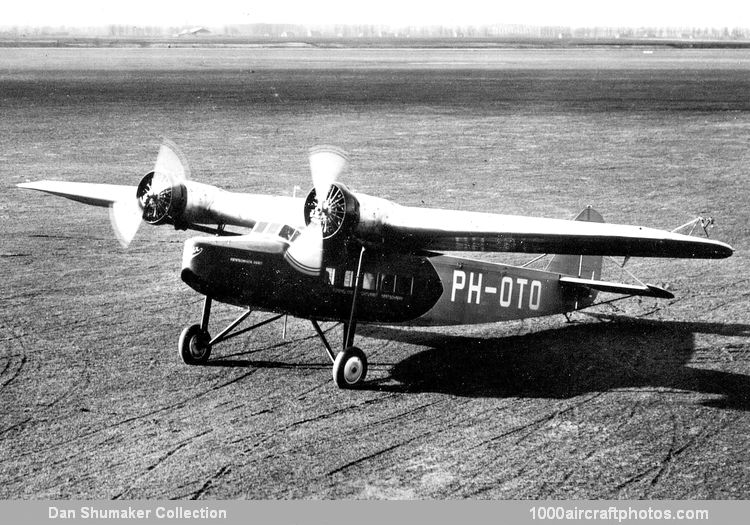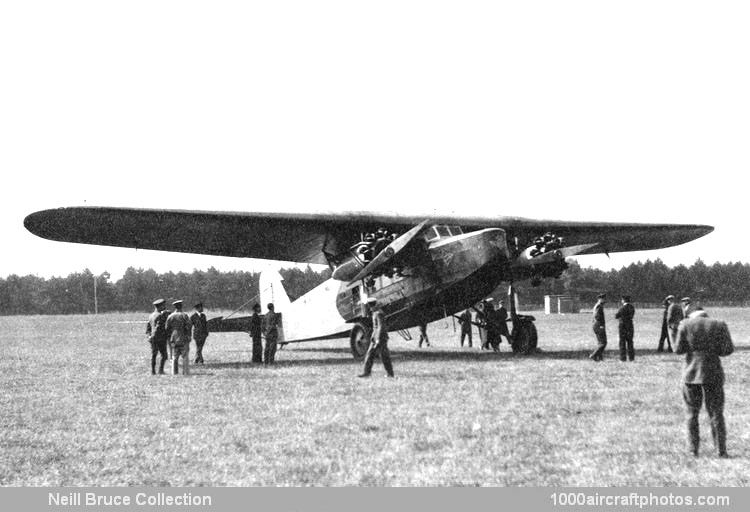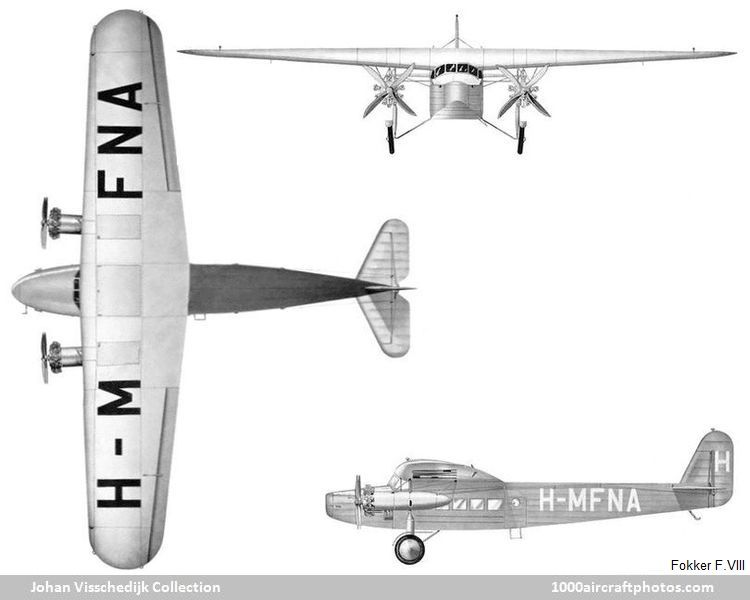12/31/2012. Remarks by Johan Visschedijk: "The first Fokker F.VIII appeared in 1927, powered by two 425 hp Bristol Jupiter-engines, with seating for fifteen passengers. KLM put seven of the eight Dutch-built aircraft into service and the eighth was flown by the Hungarian airline Malert (Magyar Légiforgalmi RT). An additional three for Malert were built under license by Manfred Weiss at Budapest, Hungary.
In Britain, Geoffrey Dorman (a well-known pilot and author) wrote enthusiastically: 'The cabin is the finest thing of its kind yet seen. The effect is that of being in a comfortable room rather than being made to sit in a corridor, which is the effect in most machines. Comfortable and roomy armchairs rather like the old Alhambra stalls are fitted, and the whole effect is one of Dutch roominess and solidity which cannot fail to inspire its occupants with a feeling of safety.'
KLM over the course of years favored the F.VIII and when the license-built Gnome & Rhône Jupiters became outdated, the airframes were in such good condition that they were given a new lease of life with the latest type of American engines; first with two Pratt & Whitney Hornets, then with Wright Cyclones, and later with Pratt & Whitney Wasps. The shape of the engine-nacelles was altered in consequence, and the F.VIII was the first KLM aircraft to be fitted with a Townend-ring and later the NACA cowling.
A more radical alteration was performed on the sixth F.VIII. Initially this aircraft was delivered to KLM on May 1, 1928, registered H-NAEH, which was reregistered in the new 'PH' country code for the Netherlands as PH-AEH on February 28, 1929. In 1933, two 690 hp Wright R-1820-F2 Cyclones were integrated into the wings at the Fokker works (as a study project for the planned four-engined machines F.XXII and F.XXXVI), and the aircraft was redesignated F.VIIIa.
PH-AEH was reregistered PH-OTO (as pictured above) on November 9, 1936, when it started service with KLM's 'Fototechnische Dienst', the airline's photographic service. (This was the second KLM aircraft registered PH-OTO, the first was a Fokker F.VIIa, the third an Auster J/1 Autocrat.) On the start of WW II, the aircraft was leased by the Dutch military service in September 1939, and was serialed 951. It was destroyed by German bombs at Waalhaven airfield on May 10, 1940, at the start of the invasion of the Netherlands.


